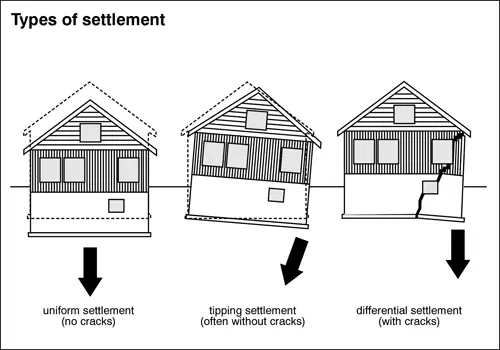The substructure or foundation is the part of a structure that is usually placed below the surface of the ground and that transmits the load to the underlying soil or rock.
2 Important Factors in Foundation Design Regarding Settlement
The two essential requirements in the design of foundations are that the total settlement of the structure be limited to tolerably small amounts and that differential settlement of the various parts of the structure be eliminated as nearly as possible. With respect to possible structure damage, the elimination of different settlement, i. e. different amounts of settlement within the same structure, is even more important than limitation on uniform overall settlement.

How To Limit The Differential Settlement
To limit or reduce the differential settlements, it is necessary –
- To transmit the load of the structure to a soil stratum of sufficient strength.
- To spread the total load over a sufficient large area of that stratum to minimize bearing pressure. If adequate soil is not found immediately below the structure, it becomes necessary to use deep foundations such as piles or caissons to transmit the load to deeper, firmer layers. If satisfactory soil directly underlies the structure, it is merely necessary to spread the load, by footing or other means.

I want to know exectly different about
ground settlement from another such as differential settlement.